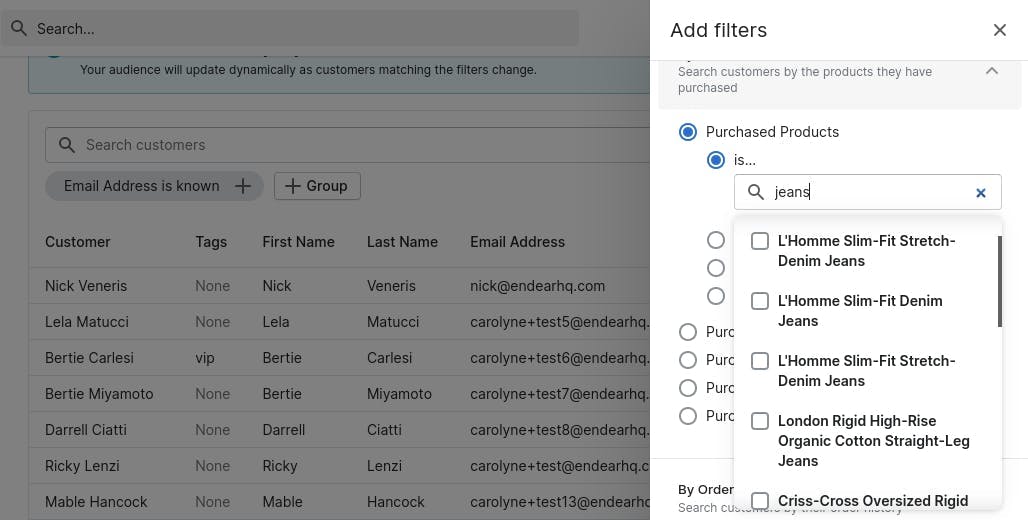Retail Personalization Strategies: Leveraging CRM for Optimal Customer Engagement
Discover effective retail personalization strategies amid the decline of third-party cookies. Explore CRM-powered approaches to deliver tailored recommendations, personalized messaging, Shoppable Stories, and successful loyalty programs.

We are all contradictions. For example, I want to be thin and healthy, but I also want to eat all the ice cream that I can fit down my gullet. Likewise, most people want more privacy online (6 out of 10 US adults in a recent survey), but at the same time, most also expect personalization from brands and businesses (71% from a recent survey). In essence:
“Don’t get to know me, but market to me like you know me.” - Consumers
Furthermore, 3rd party cookies have been going away due to a move toward a more private internet experience. Apple and Google have scaled back their use of cookies to track users online, and Facebook is an example of how the lack of good tracking is costing it $10 billion in revenue this year alone.
So how can your retail brand deliver more personalization with these limitations in place? The answer is to leverage the opt-in data that your CRM collects. Let’s look at 4 examples of retail personalization that your brand can implement today.
1. Leverage Purchase & Browsing History for Personalized Recommendations
Amazon, which spends a fortune on its recommendation algorithms, is the poster child of how effective mining customer data can be. Perhaps your brand doesn’t have the millions to spend on data scientists like Amazon does, but you don’t have to; all you need to do is focus on the data of your core customers.
When your customers browse and transact on your site, or make purchases in-store, they are generally opting in for data tracking (unless your business is in California). Your CRM should collect this 1st-party data which will be the basis for product recommendations that are highly relevant to your audience.
And because the customer is actively engaging with your brand by going to your website, your social media, or walking inside your store; they are expecting you to cater to them using their history. According to surveys, 57% of shoppers are fine providing personal information as long as it's to their benefit.
Your ecommerce platform can utilize plugins such as the ones found in the Shopify app store to add intelligent, algorithmic product recommendations that draw from your CRM platform. It’s an easy win for retail personalization that can even happen in-store by arming your sales associates with mobile devices that can pull up data-based recommendations on the fly. Now we’re talking clienteling!
Speaking of clienteling…
2. Personalize Messaging Like It's Their Birthday
Today’s consumer gets bombarded with emails and texts from dozens of brands every day. Yet it’s still amazing that through all this noise, a personalized email wishing them a happy birthday gets a 481% transaction rate! And technically birthdays are as general as you can get since literally, everybody has one.
Birthday emails exemplify the type of personalization your other marketing and sales emails should hope to achieve. It makes them feel special, but also creates an expectation there is probably a personalized gift (aka promotion) accompanying the email. This feeling is the essence of delivering a clienteling experience, making each customer feel like a VIP with each interaction with your brand.
And again, you wouldn’t know their birthday unless they volunteered that information at some point. Leveraging this type of opt-in data in your messaging can be achieved with the audience segmentation features that your CRM should have.
For example, let’s say your CRM allows you to filter to a segment that purchased slim-fit jeans, last month, within a 5-mile radius of your store.

Using filters to create highly targeted audiences for customer outreach.
You can send a personalized promotional message to this segment of your audience, with an in-store-only coupon for matching tops. This very specific messaging is a part of clienteling, making their overall shopping experience feel like they are truly known by their favorite brand.
3. Create Personalized Shoppable Stories
Retail personalization really boils down to showing specific products that each customer has a high likelihood of at least appreciating, if not purchasing. That’s why more and more retailers are leveraging curated visual catalogs in their communications. And social media sites like Instagram and Facebook are great platforms to showcase these short video stories.
But due to the limited cookie-tracking availability as mentioned earlier, it may be difficult to push the right products, let alone track how each customer interacts with what they are seeing on social media. And if you can’t get feedback, your brand doesn’t have any additional data points for the next push.
That’s why a 1st-party solution like Shoppable Stories is so important in today’s retail marketing. Not only are they similar to social media stories that customers are used to, but they leverage your CRM data to show the right products and facilitate transactions since these Stories already live right on your domain. They can tap on a product they love and buy it then and there.
These Stories can be embedded into marketing emails or SMS, and Endear customers have seen sales grow by 32% when implementing this feature. Combining convenience, great visuals, and personalization is an effective strategy when engaging with your customers.
4. Implement a Loyalty Program
Probably the best way to get more opt-in data from a customer is to bring them into your loyalty program. Since 7 in 10 believe they should receive some sort of compensation for their personal data, rewarding them with loyalty points, incentives, gifts, and access is the best way to earn their information.
Loyalty programs that emphasize an emotional connection with customers are rising in popularity as well. Sharing your brand’s core values that align with your audience can create an emotional attachment. Holding in-person events that focus on core values like sustainability, environmental cleanup, family-focus, or LGBTQ+ helps to create a personal connection and more visibility of the benefits within your rewards program.
Make sure that your loyalty program is integrated across all of your channels. Not only does it help collect more data, but also lets your customers know that they will be earning points regardless of where they do their browsing or shopping.
Finally, use your customer data in your CRM to constantly A/B test and iterate on your loyalty rewards and tiers. What incentives move the needle the most? Are 2-for-1 coupons better than 50% off? What about refer-a-friend promotions? Your loyalty program rewards should feel fresh and legitimately worthwhile to keep your audience coming back for more.
Ready to elevate your retail personalization game?
Get a personalized demo to explore the power of CRM-driven strategies to engage customers effectively in an era of evolving privacy concerns.
4. Implement a loyalty program
Probably the best way to get more opt-in data from a customer is to bring them into your loyalty program. Since 7 in 10 believe they should receive some sort of compensation for their personal data, rewarding them with loyalty points, incentives, gifts, and access is the best way to earn their information.
Loyalty programs that emphasize an emotional connection with customers are rising in popularity as well. Sharing your brand’s core values that align with your audience can create an emotional attachment. Holding in-person events that focus on core values like sustainability, environmental cleanup, family-focus, or LGBTQ+ helps to create a personal connection and more visibility of the benefits within your rewards program.
Make sure that your loyalty program is integrated across all of your channels. Not only does it help collect more data, but also lets your customers know that they will be earning points regardless of where they do their browsing or shopping.
Finally, use your customer data in your CRM to constantly A/B test and iterate on your loyalty rewards and tiers. What incentives move the needle the most? Are 2-for-1 coupons better than 50% off? What about refer-a-friend promotions? Your loyalty program rewards should feel fresh and legitimately worthwhile to keep your audience coming back for more.
Ready to get more personal in your retail business communications? Try Endear today. Click here for a free demo.
Latest posts in Modern Retail
- New Rules for WhatsApp Messaging in 2025: What Retailers Need to Know
- 9 AI Features That Make Clienteling Effortless
- Is WhatsApp GDPR Compliant for UK Retailers? Why It's Time to Switch to WhatsApp for Business
- Omnichannel Clienteling: Connecting Online and In-Store Experiences
- Luxury Retail is Coming To Amazon. Here's How Your Brand Can Compete.
Written by
Robert Woo, Writer @ EndearEdited by
Kara Zawacki, Marketing Director @ EndearLearn from the best - subscribe to our clienteling newsletter now.
Latest posts in Modern Retail
- New Rules for WhatsApp Messaging in 2025: What Retailers Need to Know
- 9 AI Features That Make Clienteling Effortless
- Is WhatsApp GDPR Compliant for UK Retailers? Why It's Time to Switch to WhatsApp for Business
- Omnichannel Clienteling: Connecting Online and In-Store Experiences
- Luxury Retail is Coming To Amazon. Here's How Your Brand Can Compete.

